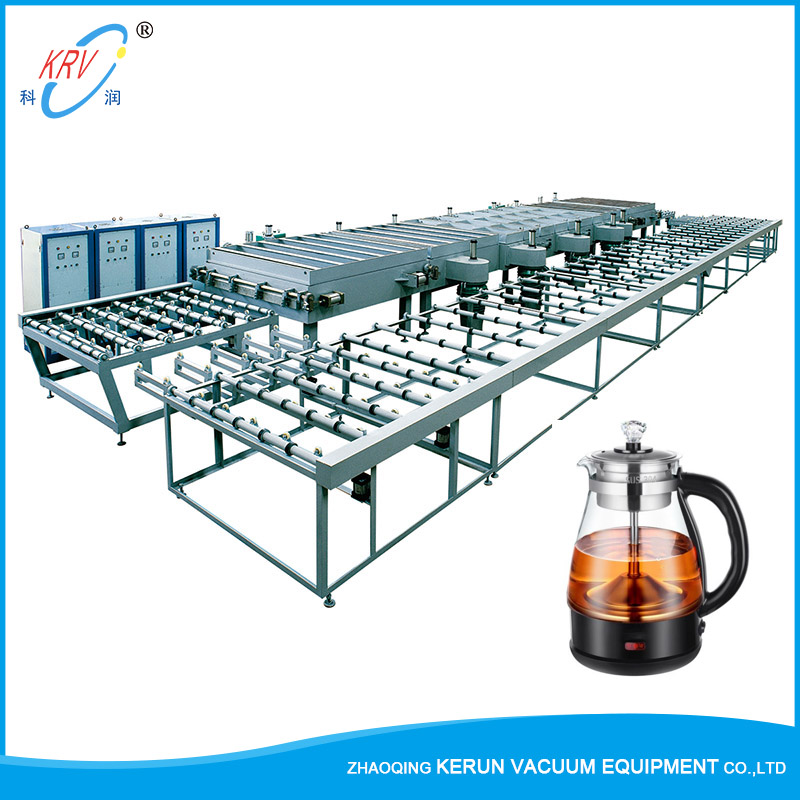The Role of Glass Coating Production Lines in Modern Manufacturing
2025-03-25
In the world of manufacturing, technological advancements have made it possible to produce high-quality products more efficiently than ever before. One of the most crucial innovations in recent years is the development of the glass coating production line. This specialized equipment has revolutionized industries ranging from automotive to architecture, enhancing the durability, functionality, and aesthetic appeal of glass products. In this blog, we will explore what a glass coating production line is, how it works, and why it has become an essential part of modern manufacturing.
What is a Glass Coating Production Line?
A glass coating production line is a series of machines and processes designed to apply coatings to glass surfaces for a variety of purposes. These coatings can range from protective layers to functional treatments, such as anti-reflective coatings, water-repellent coatings, or decorative finishes. The production line typically includes multiple stages, including cleaning, coating, curing, and quality inspection, to ensure that the final product meets the desired specifications.
Glass coatings are used to improve the performance and appearance of glass in various industries, including automotive, construction, electronics, and solar energy. The coating process can be applied to flat glass, curved glass, or glass used in complex shapes, making it highly versatile.
The Process Behind Glass Coating Production Lines
1. Cleaning
Before any coating can be applied, the glass must first be thoroughly cleaned. This is a critical step, as any dust, oils, or contaminants on the surface of the glass can negatively affect the adhesion of the coating. Cleaning machines in the production line use techniques such as high-pressure air, water rinsing, and sometimes even chemical treatments to ensure that the glass is free from impurities.
2. Coating Application
Once the glass is clean, the coating is applied. There are several methods for applying coatings, depending on the type of coating and the desired effect. Common methods include:
- Spraying: A fine mist of coating material is sprayed onto the surface of the glass.
- Dipping: The glass is submerged into a bath of coating material.
- Roller Coating: A roller applies the coating evenly to the glass as it moves through the production line.
- Vapor Deposition: A method where coating materials are vaporized and then condensed onto the glass surface in a vacuum environment. This is typically used for very thin, uniform coatings.
3. Curing and Drying
After the coating has been applied, it needs to be cured or dried to ensure it bonds properly to the glass surface. This is done using heat, UV light, or a combination of both, depending on the type of coating used. For example, UV-curable coatings will be exposed to UV light to initiate a chemical reaction that hardens the coating. In contrast, heat-cured coatings may be passed through an oven or heated chamber to achieve the desired hardness and durability.
4. Quality Control and Inspection
Once the glass has been coated and cured, it undergoes thorough inspection to ensure it meets the required standards. Quality control checks often include testing for uniformity of the coating, thickness, adhesion strength, and visual appearance. Automated systems are often used to detect defects such as bubbles, streaks, or scratches that may have occurred during the coating process.
5. Packaging and Shipping
Once the glass has passed inspection, it is ready for packaging and shipping. Depending on the industry, it may be cut to size, further processed, or assembled into larger products. For example, automotive glass may be molded into specific shapes or installed with additional components like tinting or heating elements.
The Benefits of Glass Coating Production Lines
1. Enhanced Durability
One of the primary reasons for coating glass is to enhance its durability. Coatings such as scratch-resistant or anti-corrosion layers can significantly extend the lifespan of the glass. This is particularly important in industries where glass is exposed to harsh conditions, such as the automotive or construction sectors.
2. Improved Performance
Glass coatings can improve the functional properties of glass. For instance, anti-reflective coatings can enhance the performance of glass in optical applications, such as lenses and display screens. Hydrophobic coatings can make glass surfaces water-repellent, which is beneficial for applications in architecture and automotive industries. In solar energy, coatings that increase the efficiency of solar panels are becoming increasingly common.
3. Aesthetic Appeal
Coatings also play a significant role in the appearance of glass. Whether it's creating a shiny, glossy finish or adding a matte effect, coatings can provide a customized look to suit the design requirements of a specific project. In the construction and automotive industries, decorative coatings can make glass products more visually appealing while also providing practical benefits.
4. Energy Efficiency
Some glass coatings are designed to improve the energy efficiency of buildings and vehicles. Low-emissivity (Low-E) coatings can reduce heat transfer through windows, keeping buildings cooler in the summer and warmer in the winter. This leads to lower energy consumption and can significantly reduce heating and cooling costs. In the automotive industry, glass coatings can also help improve the aerodynamics of vehicles by reducing drag.
5. Sustainability
As industries continue to focus on sustainability, glass coating production lines are evolving to use more eco-friendly materials and processes. Water-based coatings and environmentally friendly curing methods, such as UV curing, reduce the environmental impact of the coating process. Moreover, the durability of coated glass products reduces the need for frequent replacements, contributing to longer product lifecycles and less waste.
Industries That Benefit from Glass Coating Production Lines
- Automotive Industry: Glass coatings are used to enhance the durability, aesthetics, and functionality of automotive glass, including windshields, windows, and mirrors.
- Construction Industry: In the building sector, glass coatings are applied to architectural glass for energy efficiency, aesthetics, and safety.
- Solar Industry: Coatings that increase the efficiency of solar panels are essential for the renewable energy sector, helping to capture more sunlight and improve overall performance.
- Electronics Industry: Coatings are used on display screens and touch panels for enhanced performance, durability, and clarity.
- Consumer Goods: Items like eyeglasses, glassware, and even mobile phone screens benefit from coatings that improve their scratch resistance, appearance, and usability.
Conclusion
Glass coating production lines have become essential in various manufacturing sectors, providing significant benefits in terms of durability, functionality, and aesthetics. By applying specialized coatings to glass, manufacturers can enhance the performance of products, extend their lifespan, and meet the specific needs of different industries. With continuous advancements in coating technology, the glass coating production line will remain a cornerstone of modern manufacturing, driving innovation and improving the quality of products we use every day.



